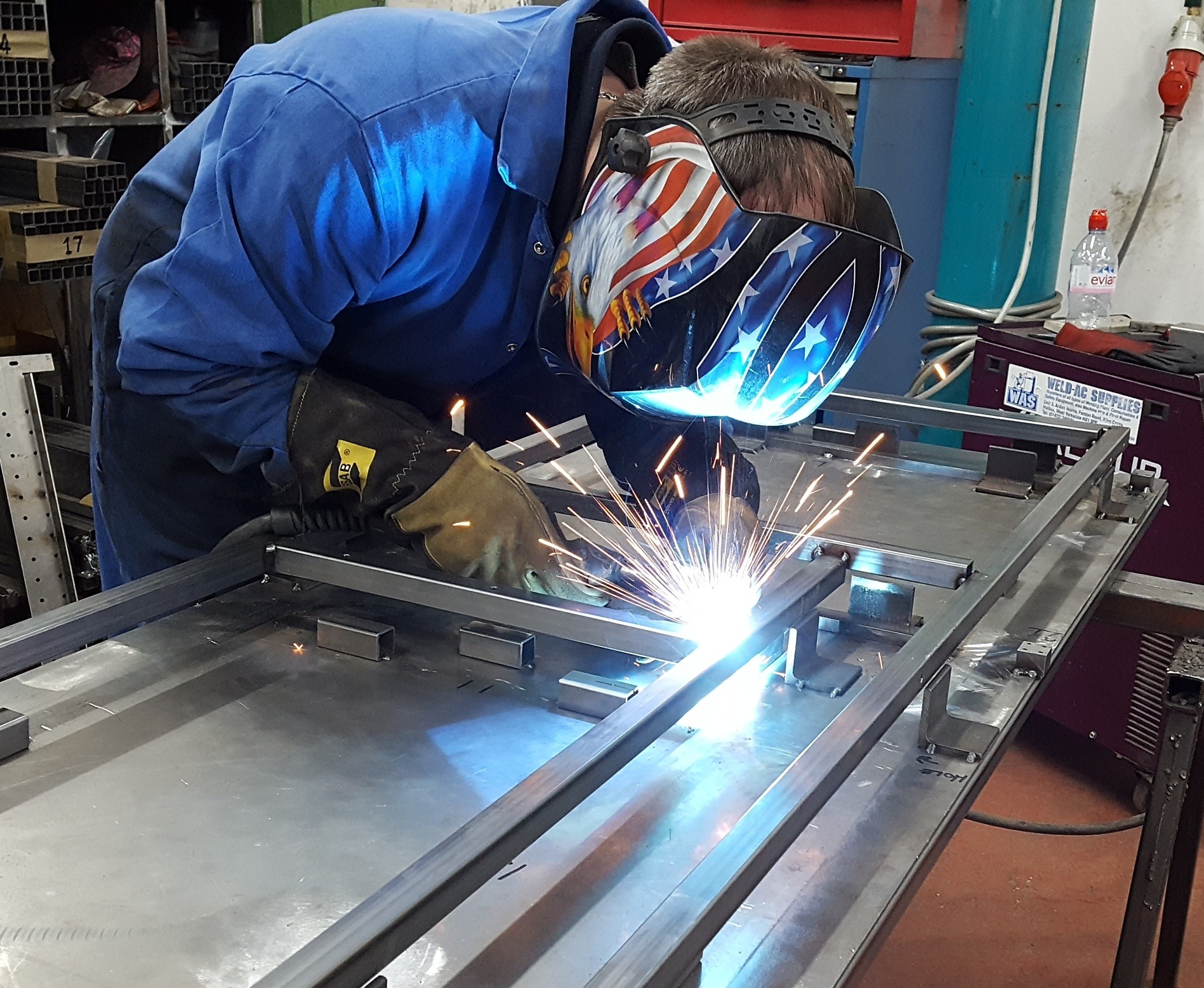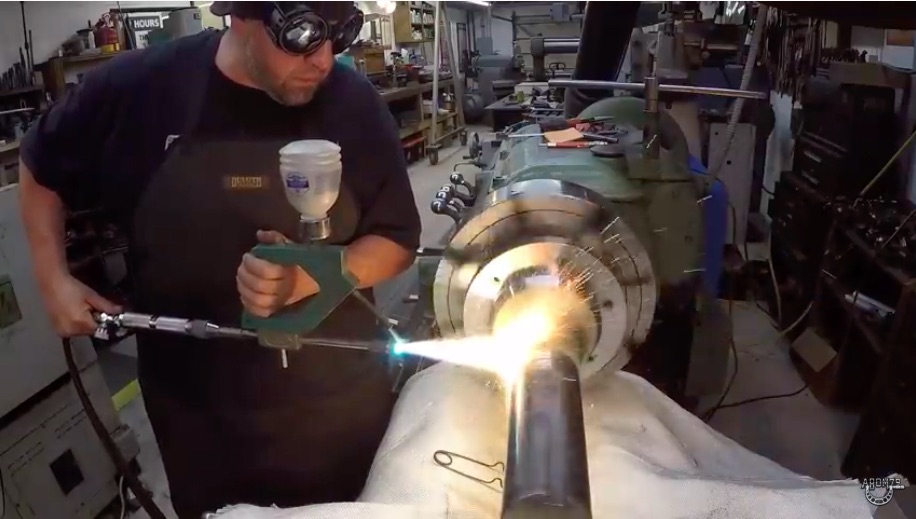Quick solutions to weld misalignment in Montana Mobile Welding and Repair Fabrication
Usual Welding Repair Issues and Exactly How to Address Them Efficiently
Welding repair services often come across a variety of issues that can endanger the stability of the last product. Usual troubles include insufficient penetration, porosity, and imbalance, amongst others. Each problem presents distinct challenges that need details strategies for resolution. Recognizing these concerns is vital for welders intending to boost their end results and skills. This conversation will certainly discover these usual welding fixing problems and efficient approaches to address them.
Insufficient Penetration
Insufficient penetration takes place when the weld steel stops working to totally fuse with the base material, causing weak joints and potential structural failings. This concern commonly comes from not enough warmth input, incorrect electrode angle, or improper welding rate. Welders may run into insufficient infiltration due to a mistake of the required parameters for a particular material thickness or kind. Furthermore, contamination on the base product's surface can impede reliable bonding, exacerbating the problem. To attend to insufficient penetration, welders ought to ensure appropriate settings on their tools and preserve a tidy job surface area. Routine examination of welds is recommended to determine any type of deficiencies early, permitting prompt corrections and the avoidance of endangered structural honesty in welded settings up.
Porosity
Porosity is a common issue in welded joints that materializes as small gas bubbles caught within the weld metal. This issue can endanger the integrity of the weld, resulting in decreased stamina and possible failing under anxiety. Montana Mobile Welding and Repair Fabrication. Porosity usually occurs from contamination, dampness, or improper welding techniques, which permit gases to leave into the liquified weld pool. To deal with porosity, welders need to guarantee correct surface prep work, keep a clean functioning environment, and utilize suitable welding criteria. Furthermore, picking the appropriate filler product and protecting gas can mitigate gas entrapment. Regular assessment and screening of welds can assist recognize porosity early, guaranteeing prompt corrective actions are taken, thus preserving the quality and reliability of the welded structure
Misalignment
Misalignment in welding can emerge from various variables, consisting of improper configuration and thermal growth. Understanding the origin is important for reliable resolution. Several modification techniques are available to realign parts and ensure structural honesty.
Reasons for Misalignment
Welding imbalance commonly stems from a range of underlying issues that can jeopardize structural honesty. One key reason is improper fit-up of components prior to welding, which can result in voids and irregular surface areas. Variations in thermal growth during the welding procedure can also result in distortion, especially if the materials being joined have various coefficients of expansion. Furthermore, poor fixturing and clamping might stop working to hold elements safely in position, bring about activity throughout welding. Inadequately conserved equipment, consisting of welding machines and tools, might introduce variances in the weld bead, further adding to imbalance. Operator mistake, stemming from not enough training or experience, can also play a substantial function in developing misaligned welds.

Correction Methods Offered
Addressing imbalance efficiently calls for a mix of restorative strategies tailored to the details problems handy. One usual method is the usage of jigs or fixtures to hold parts in the right position during welding, guaranteeing regular positioning. Furthermore, preheating the materials can help in reducing distortion and boost fit-up. For considerable misalignment, mechanical adjustment methods, such as using hydraulic jacks or clamps, can be employed to remedy the setting before welding. Post-weld warmth therapy might also be required to eliminate anxieties brought on by imbalance. Ultimately, careful assessment and modification during the configuration stage can prevent misalignment issues from becoming considerable issues, promoting a smoother welding procedure and enhancing overall architectural stability.
Distortion
Distortion is an usual difficulty in welding that can arise from numerous aspects, consisting of uneven heating & cooling. Recognizing the root causes of distortion is necessary for executing reliable prevention methods. Addressing this issue not only boosts architectural stability yet additionally enhances the general quality of the weld.
Reasons for Distortion
When subjected to the intense warm of welding, products frequently undertake changes that can result in distortion. This phenomenon largely emerges from thermal expansion and tightening during the welding procedure. As the weld area warms up, the product expands; upon cooling, it gets, which can develop inner stresses. In enhancement, unequal home heating across a work surface can exacerbate these stress and anxieties, here resulting in warping or bending. The sort of product additionally plays a considerable function; steels with differing thermal conductivity and coefficients of expansion may respond in a different way, causing unforeseeable distortions. Bad joint style and insufficient fixturing can add to imbalance during welding, enhancing the possibility of distortion. Understanding these causes is essential for reliable welding repair and prevention methods.
Prevention Techniques
Efficient prevention strategies for distortion during welding focus on managing warm input and ensuring proper joint layout. Maintaining a regular heat input aids to lessen thermal development and contraction, which can cause distortion. Utilizing strategies such as preheating the workpiece can also lower the temperature level gradient, promoting uniform heating. Furthermore, picking proper joint designs, such as T-joints or lap joints, can enhance security and minimize tension focus. Executing appropriate fixturing to protect the workpieces in place better help in maintaining positioning during the welding procedure. Finally, staggered welding series can disperse warmth extra uniformly, preventing localized distortion. By applying these methods, welders can greatly decrease the likelihood of distortion and enhance the overall quality of their welds.
Cracking
Fracturing is an usual problem run into in welding repair services, typically resulting from various aspects such as incorrect air conditioning prices, product choice, or insufficient joint preparation. The occurrence of fractures can considerably endanger the honesty of the weld, bring about possible failures during procedure. To resolve this concern, welders should initially analyze the origin, ensuring that products are suitable and properly picked for the certain application. In addition, controlling the cooling price during the welding process is important; quick air conditioning can generate anxiety and result in cracking. Proper joint layout and prep work also contribute to minimizing the risk. Carrying out these methods can improve weld quality and sturdiness, ultimately minimizing the possibility of splitting in completed weldments.

Incomplete Combination
A substantial concern in welding repair work is insufficient fusion, which happens when the weld steel does not sufficiently bond with the base product or previous weld passes - Fabrication. This issue can lead to weaknesses in the joint, possibly endangering the integrity of the welded structure. Factors contributing to insufficient combination include not enough warm input, incorrect welding strategy, and contamination of the surfaces being joined. To resolve this issue efficiently, welders ought to assure correct pre-weld cleaning and surface area preparation, along with adjust their welding specifications to achieve adequate infiltration and blend. Routine inspection throughout the welding process can additionally assist recognize incomplete combination early, permitting for prompt rehabilitative measures to boost the general quality of the weld
Overheating
While welding repair services can boost architectural honesty, overheating offers a substantial challenge that can cause product deterioration. Extreme warm during welding can change the mechanical homes of metals, causing minimized strength, raised brittleness, and bending. This sensation is especially critical in high-stress applications where structural dependability is paramount. Recognizing overheating can entail visual examinations for discoloration or distortion, along with checking temperature level during the welding procedure. To mitigate the threats connected with overheating, welders ought to utilize suitable techniques, such as controlling warmth input, readjusting travel rate, and making use of appropriate filler materials. Additionally, implementing pre- and post-weld warm treatments can assist recover material residential properties and improve the total high quality of the repair work, ensuring lasting efficiency and safety and security.
Frequently Asked Inquiries
What Are the Common Indications of a Welding Issue?

Just How Can I Examine My Welds for Quality?
To evaluate welds for top quality, one can use visual assessments, ultrasonic screening, and radiographic techniques. Each method guarantees architectural honesty, identifies issues, and verifies adherence to defined standards, eventually enhancing the dependability of the welded joints.
What Safety Precautions Should I Take While Welding?
When welding, one must focus on safety and security by using suitable individual protective equipment, making certain correct ventilation, safeguarding flammable products away, keeping a clean work space, and recognizing surroundings to avoid accidents and injuries.
Can I Fix a Weld Without Remodeling the Entire Joint?
Fixing a weld without remodeling the entire joint is possible, depending upon the damage (Montana Mobile Welding and Repair Welding). Strategies such as grinding, including filler product, or using a welding process can properly address certain defects while protecting the surrounding structure
What Tools Are Vital for Efficient Welding Fixes?
Crucial devices for efficient welding fixings include a welding equipment, wire brush, mill, safety gear, clamps, and filler products. Each tool plays a crucial duty in guaranteeing quality and safety and security throughout the repair service process. Porosity typically occurs from contamination, wetness, or incorrect welding techniques, which allow gases to escape right into the liquified weld pool. Inadequately conserved devices, consisting of welding equipments and devices, might introduce disparities in the weld grain, more adding to imbalance. When subjected to the extreme warm of welding, products often go through adjustments that can lead to distortion. Breaking is a typical concern run into in welding repairs, typically resulting from various elements such as improper air conditioning rates, material option, or insufficient joint preparation. A substantial issue in welding fixings is incomplete fusion, which happens when the weld steel does not properly bond with the base material or previous weld passes.